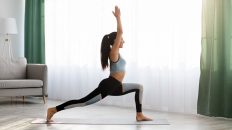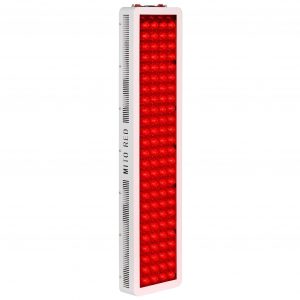Some studies have been conducted to verify the effects of Pilates for individuals who are obese, but conclusive results are not yet available due to methodological concerns. The present study aims to verify and compare the effects of Pilates and aerobic training on cardiorespiratory fitness, isokinetic muscular strength, body composition, and functional task outcomes for individuals who are overweight/obese.
Methods: Of the sixty participants, seventeen were allocated to the control group, since the intervention protocol (Pilates or walking sessions) was during their working hours. The remaining 44 participants were randomly allocated to one of two experimental groups (Pilates (n = 22)) or aerobic groups (n = 21).The Pilates and aerobic groups attended 60-min exercise sessions, three times per week for 8 weeks. The aerobic group performed walking training at a heart rate corresponding to the ventilatory threshold. The Pilates group performed exercises on the floor, resistance apparatus, and 1-kg dumbbells. The control group received no intervention. All volunteers were evaluated at the beginning and end of the intervention. The following assessments were conducted: food intake, cardiorespiratory maximal treadmill test, isokinetic strength testing, body composition and anthropometry, abdominal endurance test, trunk extensor endurance test, flexibility test and functional (stair and chair) tests.
Results: There was no significant difference pre- and post-intervention in calorie intake [F(2, 57) = 0.02744, p = 0.97)]. A significant improvement in oxygen uptake at ventilatory threshold (p = 0.001; d = 0.60), respiratory compensation point (p = 0.01; d = 0.48), and maximum effort (p = 0.01; d = 0.33) was observed only in the Pilates group. Isokinetic peak torque for knee flexor and extensor muscles did not change for any groups. Lean mass (p = 0.0005; d = 0.19) and fat mass (p = 0.0001; d = 0.19) improved only in the Pilates group. Waist and hip circumference measurements decreased similarly in both experimental groups. Abdominal test performance improved more in the Pilates group (p = 0.0001; d = 1.69) than in the aerobic group (p = 0.003; d = 0.95). Trunk extensor endurance and flexibility improved only in the Pilates group (p = 0.0003; d = 0.80 and p = 0.0001; d = 0.41, respectively). The Pilates group showed greater improvement on the chair and stair tests (p = 0.0001; d = 1.48 and p = 0.003; d = 0.78, respectively) than the aerobic group (p = 0.005; d = 0.75 and p = 0.05; d = 0.41, respectively).
Conclusion: Pilates can be used as an alternative physical training method for individuals who are overweight or obese since it promotes significant effects in cardiorespiratory fitness, body composition, and performance on functional tests.














